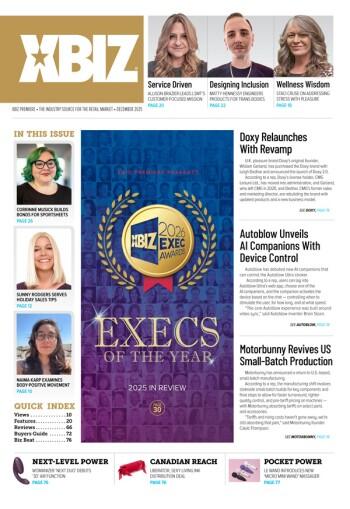It can be hard to keep up with technology. One minute, something is brand new. The next, it’s been replaced by the latest big thing. One just has to look at the mobile phone market to see how fast things can change. And while the rapid technology evolution is great on the surface for consumers (and who isn’t a consumer of something?), how a business – any business – can best leverage the technological shifts can be tricky to master. More to the point, how online businesses incorporate technology can often be critical to their success.
Knowing this, how do you implement new methods for reaching consumers while at the same time building off of the marketing and sales tactics that brought you success in the first place? Does technology enhance your initiatives? How can you gage the effectiveness of any new methods? Perhaps most importantly, how do you ensure you are keeping ahead of your consumers that are getting more and more comfortable with using new technologies to make purchases? If not expecting them outright?
It is important to keep in mind that tech can (and should) be used to help any ongoing sales and marketing efforts. It is also becoming ever more apparent that consumers are quick to adapt to new purchase methods.
What’s out there?
Perhaps the best place to start is with a brief examination of some technologies that have gained prominence in online commerce, and with consumers.
Web widgets – simply stated, these particular items (sometimes known as buy now buttons) have seen a rather large increase in popularity with consumers over the past few years, thanks to companies like Amazon and PayPal. Anyone that has shopped online has seen web widgets, those clickable boxes or buttons that integrate into a site or email, and offer the consumers an easy and quick way to buy.
Smart forms – as the global market opened (and continues to open), forms that sensed consumers’ geographic location became a key driver for sales initiatives. However, what about forms that also sense the browsers those consumers are using? Or forms that offer consumers payment and currency options specific to the country the respective consumers are in? Or even forms that allow you to split test different options to see which produces the best results? Consumer attention spans are short. And simplicity is the key. The easier the purchase process is, the more likely a successful sale becomes.
Responsive portability – we have all seen responsive design being incorporated into websites. And coupled with design is responsive portability. Not only are consumers demanding websites be built to display and function properly across the wide range of devices, they are looking for digital content to do the same. The consumers’ experience is strongly based on whatever device they are using at any particular moment. And if digital content from purchases or subscriptions is not displaying on that device how they think it should, they may just go elsewhere. The same holds true for payment and checkout options. Consumers are going to be more inclined to buy if they are shown their language, their currency, and their respective payment types upon checkout. Responsive applies to more than just website design, it also applies to content display and billing systems.
Push notifications – sometimes referred to as web hooks, this technological system generates a notice whenever a specified action takes place. For instance, if a payment is made, refunded, charged back, or a subscription renews, an update is sent to a URL informing your system of the change. This can then enable your system to ensure consumers have access to content, update an email list, or provide access to special offers. Additionally, web hooks are a key component to sites that sell hard goods, helping facilitate the fulfillment process to ship products.
Measuring
By no means is the above short list a comprehensive catalog of technologies that can supplement sales and marketing initiatives. But it does present another important aspect of using tech – measuring outcomes. Google Analytics (GA) has provided opportunities to look at amounts of data relatively quickly and simply. And a number of payment forms and payment links include GA capabilities. Some are even now offering support for Google AdWords integration, allowing businesses that have paid online ads to track a sale/conversion back to those ads. Coupled with the ability of some newer form systems to provide an easy way to perform A/B or split testing between forms, or even between billers, data sets should not be difficult to come by. With metrics like these readily available, it becomes a matter of accessing the data, identifying trends, and taking actions based on what you see to improve conversions. Not every technology is going to be right for every use case, and through measurement and testing, you can find and use the ones that will produce optimal results.
Using Tech to Gain and Retain Consumers
It is important to keep in mind that tech can (and should) be used to help any ongoing sales and marketing efforts. It is also becoming ever more apparent that consumers are quick to adapt to new purchase methods. And depending on where they are at in the world, sometimes they prefer using them to buy products and services. Take the use of mobile devices to make purchases in many European countries. In scenarios like that, something like a web widget or smart form becomes a key factor. Even responsive portability would play a large role in a mobile consumer’s purchase process.
So should you put all of your focus on understanding and implementing technologies? Hardly. You certainly can if you wish, but you would not want to do so at the expense of your other sales or marketing tactics and initiatives.
After all, you need to get the consumers’ attention in the first place. So what’s the answer? How can you incorporate tech while still leveraging what has worked for you so far? One way to do this is to work with a partner that will do some of the technology heavy lifting for you. There are a lot of different companies out there that can assist in this regard, from specialized systems integrators to payment processors.
In fact, a number of payment processors already have many tech components built into their platforms and systems. As you are forging your way into new markets, expanding your current operations, or just starting out, be sure to ask your processor how it can help you stay ahead of consumers when it comes to technology.
The tech isn’t going away. It will only continue to become more prevalent and important as the digital generation (and those after it) will keep pushing for faster and easier ways to make purchases. The market does change fast, and consumers can be fickle. With the right technologies and/or partner that ensures you are using the right technologies, keeping up and staying ahead of the curve will put your business in a strong position moving forward.
Jason Kirk, vice president of product development for CCBill, is an accomplished software and technology professional with 16 years of experience in highly critical development lifecycles who strives daily to improve the end-user experience through a variety of methods including constant re-evaluation, established business processes, implementation of automated systems, and an innovation-inspiring open work environment.






